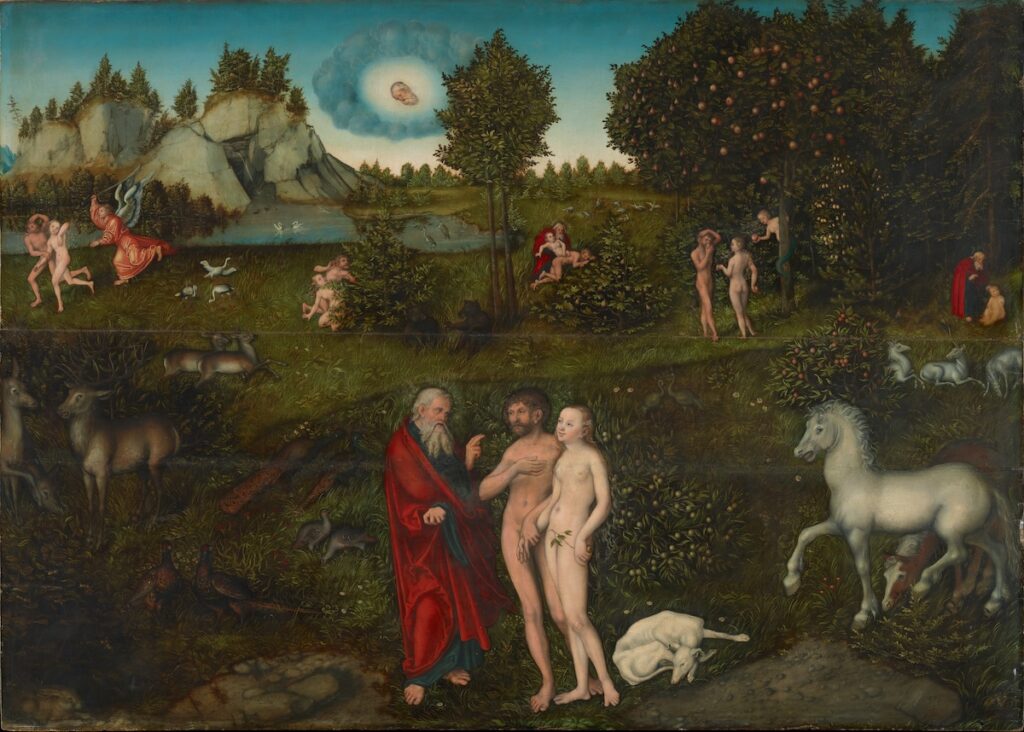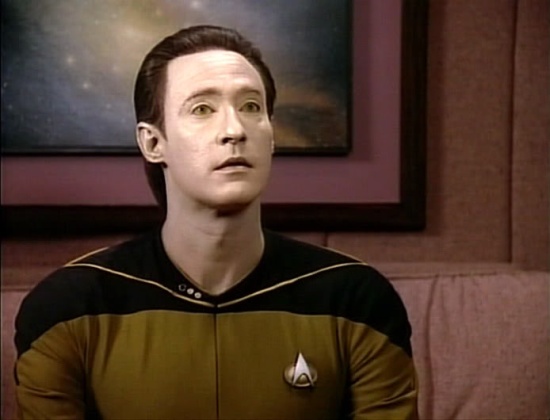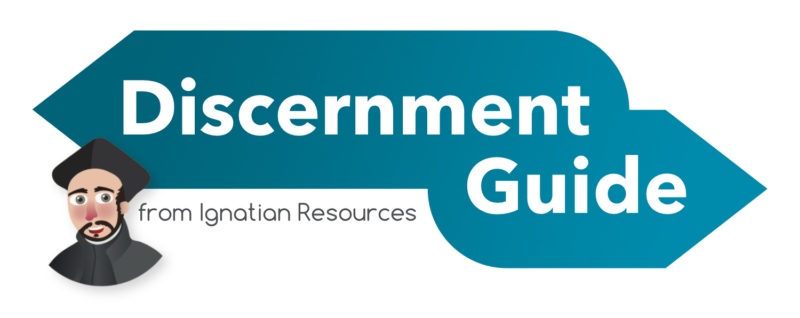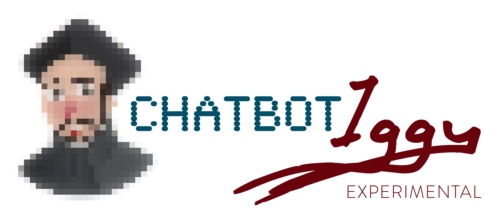I recall a priest saying that when he gets frustrated by a traffic jam he tells himself, “Oh Original Sin!” Toothache? Original Sin. At first I thought okay, that makes things feel better. This reality of suffering exists beyond my control, but oh that darn Adam and Eve who delayed my morning commute!
Over time I’ve come to find something wrong-headed about this theological explanation. How is blaming the doctrine of Original Sin for a traffic jam helpful? That simply fails to address the true structural causes of the traffic jam. And in the case of the toothache, doesn’t pain tell us that we need to get medical attention?

Paradise, Lucas Cranach, 1530
Origins
The doctrine of Original Sin was fully developed by St Augustine of Hippo in the 5th century, drawn from the Fall myth where Adam and Eve disobey God and eat from the tree of the knowledge of good and evil. Since then, Adam has been juxtaposed with Jesus and Original Sin became the very reason for the Incarnation. Augustine’s theory has shaped our theology, often for the worst, and teaches that we inherit the consequences and guilt of Adam and Eve’s sin.
There are problems this understanding of Original Sin creates, especially when we blame everyday frustrations on it. First, it can undermine our personal and collective responsibility for suffering in the world. And second, it reduces Jesus Christ to a cosmic mop, who only came to save us from the mess we created. St Ignatius, as illustrated in his Meditation on the Incarnation, seems to believe that Christ came in love, despite the mess. In other words, God desired to be with us no matter what.
If Jesus is no longer the redeemer of an ancient sin, then what is he redeeming? Well, the purpose of Jesus is no longer a transactional “wiping away” of some debt, but a reminding us of our original blessing. Knowing our inherent belovedness and our security in divine love is what redeems. The creation story begins with all of God’s creation as “very good” – original goodness. From the moment Adam and Eve are created, through the Fall, God continues to remain with them. God seeks them out in the garden. And throughout the scriptures God provides to humanity. Jesus is the apogee of God’s providential love for humanity. Jesus did not come to convince God to love humanity, but rather to convince humanity of God’s love for them.
What the Fall Myth Can Teach Us
In the garden, Adam and Eve exhibit a kind of blissful ignorance, a certain blindness. The scripture says that the woman found the tree “a delight to the eyes” and that “the tree was to be desired to make one wise”. And so they ate.
Ignatius might say that Original Sin is our tendency toward disordered attachments and the distortion of gifts. We share in this reality. It’s a common human struggle, or as Ignatius called it, “the enemy of our human nature”. We might even say it’s our struggle against the ego.
It might be better to call this doctrine “Original Sinfulness”. Even Adam and Eve were capable of such attachment from the very beginning! Original Sinfulness is the absence of wholeness, which the Fall story tells us is part of the human condition. As Augustine wrote, “Our hearts are restless until they rest in you.” We sense our incompleteness.
Blindness, shame, and hiding – which are products of the Fall myth – are not the path to wholeness in God. Adam and Eve, who were already naked to begin with, suddenly see their nakedness and cover it up. They don’t want to be self-aware, which is the true path to wholeness. Instead, they hide from God, but God calls out and invites them back into self-awareness.
I think the story shows us our natural (”original”) resistance to that. We’d prefer to be blind and in the dark. Ignatius said secrecy and darkness is a sign of the evil spirit.
Adam and Eve’s departure from the garden also speaks to our human struggle to live in harmony with nature. Humans and the rest of creation can coexist, but we haven’t been doing it well.
Jesus’ Ministry
Jesus comes to draw us back into this harmony and self-awareness—the wholeness—which he calls the Kingdom of God. His ministry focuses on restoration, reconciliation, and inclusion. He wants to make us whole, spiritually and physically, but also communally. Ignatian author Louis Savary paraphrases Ignatius and writes that our purpose is to help bring “all creation together into one magnificent conscious loving union.” Talk about wholeness.
Original Sin is not the cause of a traffic jam or a toothache. Rather, it’s a symbol of the inherent human tendencies towards disordered attachments, the distortion of gifts, and a departure from wholeness. Rather than some event that caused universal guilt, Original Sin can be seen as a condition that reflects our natural resistance to self-awareness and spiritual growth. It’s about the human struggle with ego, blindness, shame, and a tendency to hide from our true selves and from God.
The invitation embedded in the myth of the Fall is a summons to grow in deeper self-awareness, to journey together toward the wholeness that has eluded humanity, and through grace, to restore harmony between ourselves, one another, and all creation.
Related posts:
Listen to the podcast version of this post…








